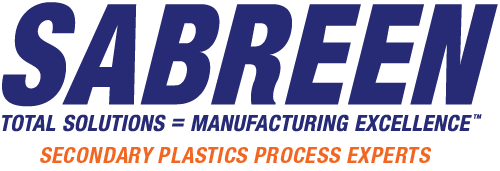Abstract
Users of fiber lasers have difficulty marking or engraving nylon. The key to achieving high–quality marking contrast is to incorporate laser enhancing additives into the nylon material during the molding process, whether using color concentrate or precompounded materials. The benefits of laser marking nylon have transformed many industries, including firearms by enabling unique part identification, data matrix and QR codes, and customization.


Nylon plastics have a wide range of applications including firearms, automotive, electrical & electronics, industrial, consumables and oil & gas. However, the varying physical, chemical, and surface properties of nylon (polyamide), particularly glass-filled nylons, make laser marking & engraving challenging. The most popular contrast colors are opaque white on black, jet black on white, and opaque white on medium blue. When laser additives are combined with the appropriate pigments and dyes, they produce superior marking quality at a low cost. Laser additives are used in a variety of plastics, including ABS, Acetal, PET, PVC, polycarbonate, polypropylene, and polyethylene.
Nylon Polyamides
Polyamides, also known as nylon, are a prominent class of thermoplastics used in high-performance applications. They consist of amide linkages, specifically –CO-NH–. Nylon is synthesized through the process of polycondensation, wherein a diamine reacts with a diacid, or through ring-opening polymerization of lactams containing six, eleven, or twelve carbon atoms. Nylon monomers can be aliphatic, semi-aromatic or aromatic (aramids) and can range in structure from amorphous, semi-crystalline and of greater or lesser crystallinity. Two major polyamides are poly(hexamethylene adipamide) (nylon 6,6) and polycaprolactam (nylon 6). Aliphatic polyamides include nylon 12, 69, 6-10, 6-12, 46 and 1212. The bio-based engineering plastic known as Nylon 11 is sourced from renewable resources, specifically castor plants.
Laser Marking Surface Mechanisms
Laser-markable plastics are characterized by their ability to absorb laser light and subsequently convert it into thermal energy within the near-infrared (NIR) range of wavelengths between 1060nm-1070nm. Three common types of lasers are Ytterbium fiber (MOPA & Fixed pulse), Vanadate (Nd:YVO4), and Nd:YAG. Depending on the type of laser and the desired marking contrast, a variety of chemistries can be used to produce surface reactions such as carbonization charring, chemical change foaming, and color change. The same laser can perform all surface reactions by adjusting the settings in the marking software (power, pulse repetition rate, and marking speed). Continuous wave (CW) CO2 lasers have a wavelength of 10.6 microns (far infrared spectrum). CW CO2 lasers have lower peak power and cannot produce high contrast markings on plastics.
Laser Additives
Since most polymers have limited absorption properties in this wavelength (NIR) and cannot produce noticeable contrast, experts use a variety of additives, fillers, pigments, and dyes to increase absorption and achieve high contrast quality. Additives increase the degree of color contrast (absorption of laser light), which is further enhanced by optimal laser selection and marking parameters. Unlike popular belief, there isn’t a single universal additive.
Some additives contain antimony-doped tin oxide and antimony trioxide mixtures, which can cause the natural (uncolored) substrate opacity to appear “grayish”. Other additives may contain aluminum particles, mixed metal oxides, or proprietary compounds. Color adjustments are made with pigments and dyes to achieve the desired colormatch appearance. Specific additives have been approved by the FDA for use in food contact and food packaging under conditions A-H of 21 CFR 178.3297 Colorants for Polymers.
Laser additive compounds are available in pellet granulate and powder form. Granulate products are blended directly with the polymer resin, while powder forms are converted into masterbatch. The loading concentration level by weight (in the final part) usually ranges between 0.01 and 3.0%. To achieve the best color contrast, laser additives must be distributed/dispersed uniformly throughout each part.
Fiber Lasers
Nanosecond Ytterbium fiber lasers (MOPA and Fixed pulse) are ideal for marking, engraving, and etching plastics due to their superior beam quality (M2) and high brightness “radiance”. They can focus to a small spot size (less than 20 microns), resulting in high energy density. One significant advantage of using MOPA (Master Oscillator Power Amplifier) lasers is ability to fine tune the pulse width. Low pulse width, typically less than 90 nanoseconds, is ideal for marking plastic materials.
Laser irradiance (W/cm2) and fluence (J/cm2) are important parameters in plastic marking. The intensity is influenced by pulse frequency, laser power, focal spot size and pulse width. Fluence is influenced by beam intensity, scan velocity, pulse overlap, and focus beam diameter. Pulse repetition rate and peak power density are critical parameters in forming the mark and achieving the optimal contrast and speed. High peak power at low frequency increases the surface temperature rapidly, vaporizing the material while conducting minimal heat into the substrate. As the pulse repetition increases, a lower peak power produces minimal vaporization but conducts more heat. The arithmetic curves of power versus pulse repetition rate are inversely proportional.
Scott R. Sabreen is founder and president of The Sabreen Group, Inc., which is an engineering company specializing in secondary plastics manufacturing processes – surface pretreatments, bonding decorating and finishing, laser marking and product security. He has been developing new technologies and solving manufacturing problems for over 30 years. Sabreen can be contacted at 972.820.6777 or by visiting www.sabreen.com or www.adhesionbonding.com.



